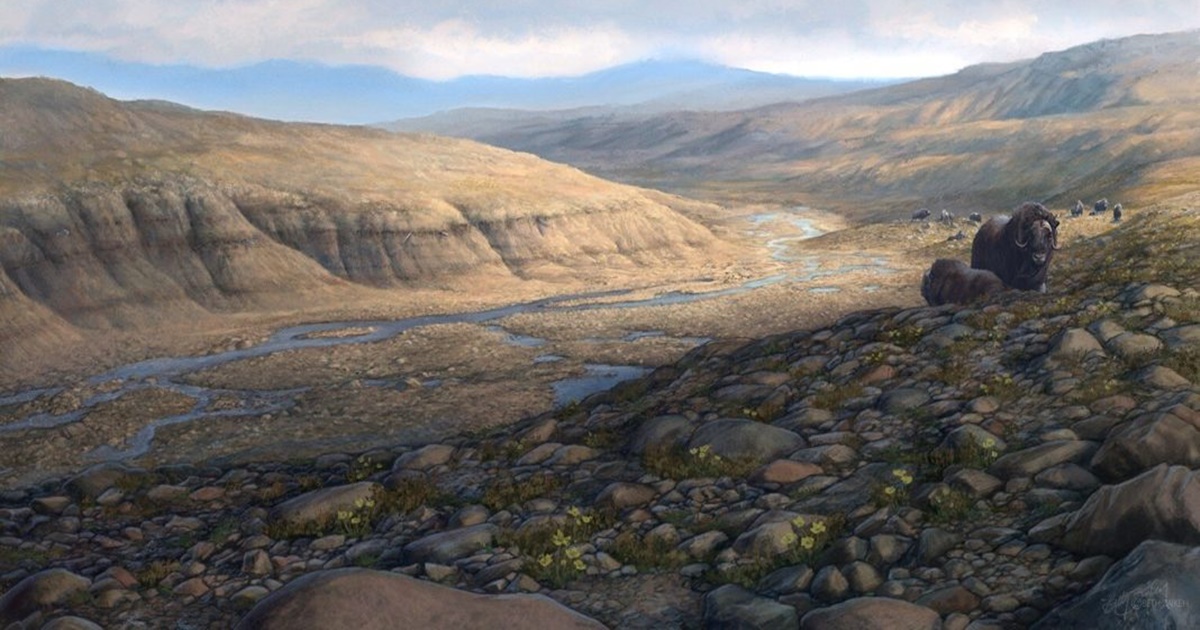In a recent study, scientists found DNA from animals, plants, and microbes 2 million of years.
The discovery is the oldest ever recorded from Greenland’s northernmost remains, excavated around the mouth of a fjord in the Arctic Ocean, revealing an incredible lost world on this remote frontier.
The researchers said DNA fragments were found in animals including mastodons, reindeer, rabbits, lemmings and geese. PlantsPoplars, birches, thuja and microorganisms including bacteria and fungi.
The mastodon was a relative of the elephant that roamed North and Central America until it became extinct along with other large Ice Age mammals about 10,000 years ago. The finding shows that there is a wider range than previously known.
“Mastodon was a big surprise. It had never been found before in Greenland. However, the biggest surprise was this unique habitat of mixed arctic and temperate species that has no modern analogues. said SK Willerslev, director of the Lundbeck Foundation Geogenetics Center and leader of the study published in the journal. Nature.
“I don’t think anyone could have predicted that 2 million years ago Greenland would be home to such a wide variety of plants and animals, similar to the climate we are expected to witness in a few years due to global warming.” Added Willerslev, who is affiliated with the University of Cambridge and the University of Copenhagen.
Although ancient DNA is highly perishable, the study showed that under the right conditions, in this case permafrost, it can last longer than previously thought.
According to Willerslev, he would not be surprised if more DNA from at least 4 million years ago is now found.
The researchers extracted and sequenced DNA from 41 samples of organic-rich sediments obtained from five sites on the Peary Land Peninsula, which extends into the Arctic Ocean.
Microscopic pieces of DNA were extracted from the clay and quartz in the layer, and more than 100 species of animals and plants were identified.
“We think that binding the DNA to the mineral particles allowed it to survive longer than otherwise possible. The binding reduced the rate of spontaneous chemical degradation. This Willerslev.
Willerslev goes on to say that the fragmented DNA can’t be used to revive extinct species like in the “Jurassic Park” books and movies, but it could reveal the secrets of how plants can become more resilient to warmer climates.
“You can’t use them for cloning”Regarding DNA residues, Willerslev said, “But you can use it to make organisms like plants better adapted to warmer climates by genetically modifying them.
It was extracted from a molar of another relative of the elephant, the mammoth, in northeast Siberia, 1.2 million years ago, and was also preserved in permafrost conditions. It is worth comparing that our species Homo sapiens appeared about 300 thousand years ago.
Part of our knowledge of prehistoric organisms comes from the study of fossils, but there is a limit to what they can reveal, especially about genetic relationships and traits. That’s where the Ancient DNA proving invaluable.
Most of Greenland is covered in ice, making it a polar desert, but 2 million years ago, average temperatures in Greenland were 11 to 17 degrees Celsius warmer, says first author Kurt Kjer of the University of Copenhagen.
The presence of marine organisms including horseshoe crabs and green algae in the DNA found also illustrates this warmer climate, the researchers said.
The DNA revealed in detail this ancient ecosystem with an open boreal forest teeming with trees, shrubs, small plants and animals.
He didn’t identify which large predators were present, but study co-author Mikkel Pedersen of the University of Copenhagen says they may have included wolves, bears and saber-toothed cats.
Study co-author Nikolaj Larsen of the University of Copenhagen said researchers are looking at sites in northern Canada for ancient DNA.

Prone to fits of apathy. Unable to type with boxing gloves on. Internet advocate. Avid travel enthusiast. Entrepreneur. Music expert.



